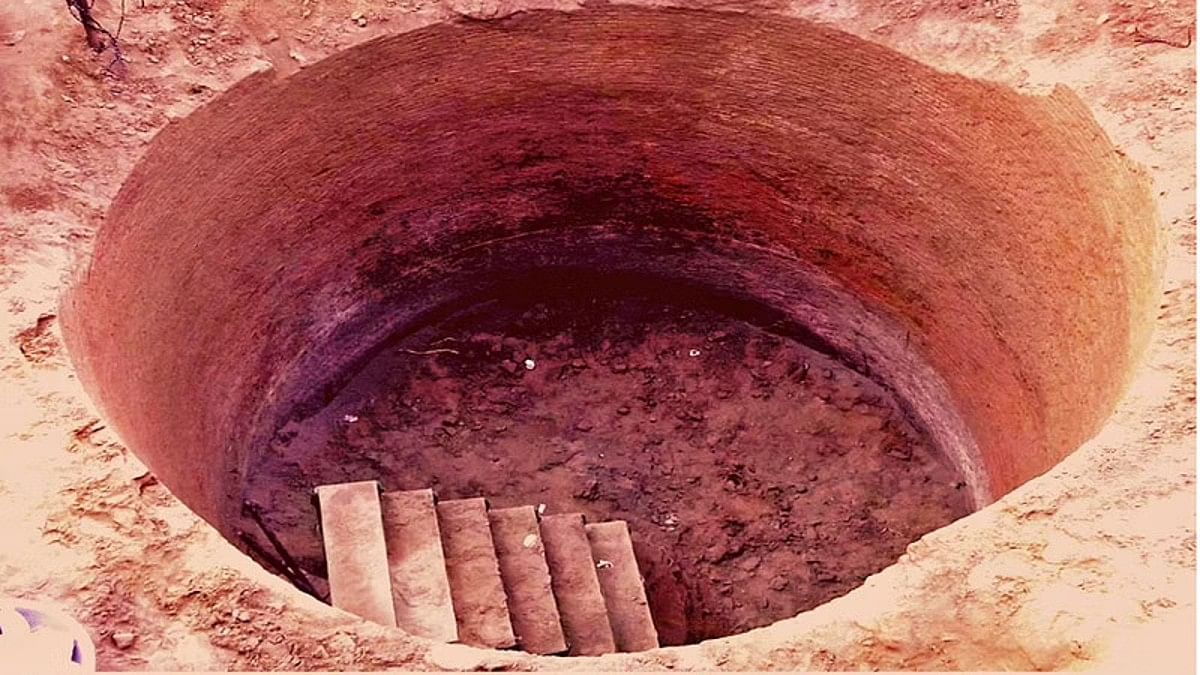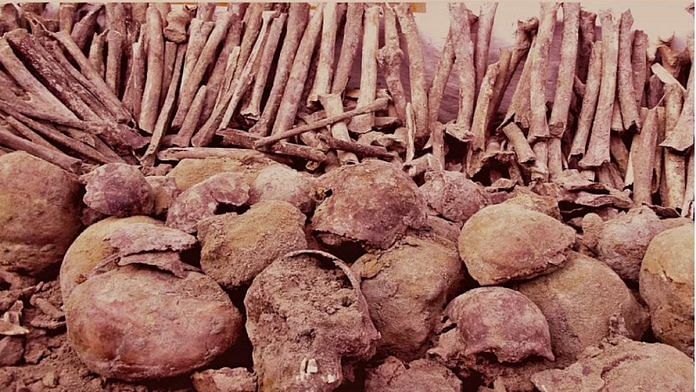New Delhi: Skeletal remains excavated from an abandoned well in Punjab’s Ajnala in 2014 belong to Indians native to the Indo-Gangetic Plain, findings of a study revealed this past week.
The study combined scientific and historical evidence to suggest a link between the skeletal remains and Indian sepoys massacred by the British during the First Indian War of Independence in 1857.
But how did researchers identify the origin of the skeletal remains, despite the remains being badly damaged due to poor handling during the excavation? The answer: dental samples and genetic analysis.
The group of researchers relied on genetic makeup to confirm their findings. For this purpose, they looked at mitochondrial DNA (mtDNA) — which is easier to recover from damaged or degraded samples than DNA — extracted from the skeletal remains. The mtDNA is used to trace matrilineal ancestry, as it passes from mother to offspring.
Dental DNA is generally of higher quality, and less prone to decomposition or decay than bone DNA, which is why scientists have been relying on it to solve crimes, in some cases by linking incinerated remains of homicide victims to the crime scene.
In addition to genetics, researchers studying the Ajnala remains also relied on dental samples taken from the skeletal remains, estimated to be 165 years old, to identify the ancestry and eating habits of those to whom they belong. This exercise was carried out using an analysis of isotopes of carbon.
Also read: Sampling DNA from air could help track animals, transform wildlife monitoring
Carbon-14 analysis
All of Earth and its life forms are composed of different elements, primarily oxygen, carbon, and nitrogen. Most of these elements exist in forms that are stable such as Carbon, 99 per cent of which exists in its most stable form (Carbon-12).
This leaves one per cent of carbon in our atmosphere which is made up of different forms of carbon — the isotopes Carbon-13 and Carbon-14. Compared to Carbon-13, which has six protons and seven neutrons, Carbon-14 has six protons and eight neutrons.
The presence of the two extra neutrons makes Carbon-14 too heavy to be held together. As a result, excess mass is emitted in the form of energy-carrying particles. Such materials, which radiate energy as they decay, are called radioactive elements.
By studying the decay of the Carbon-14 present in a sample, scientists can thus calculate the age of the sample on Earth.
As humans and animals consume plant-based food from a certain region, the isotope ratio of different elements from that region, such as oxygen, carbon and nitrogen, is deposited in the bones and teeth like a ‘fingerprint’ or ‘impression’ of the climate.
Since food habits in the past were largely based on what was locally available, researchers rely on isotope analysis of bones to track an individual’s native place. For example, barley or wheat-based crops generally grown in higher latitudes with cool and wet climates have higher values of Carbon-13, compared to crops like maize, millet, and sorghum, which grow in latitudes with warm and humid climatic conditions. Similarly, isotope values of nitrogen are influenced by aridity, soil type, presence of manure and water efficiency.
This is how the presence of these isotopes of carbon and nitrogen, when studied together, can help identify the dietary habits of the individual in question. This process is known as isotope analysis.
What researchers found in Ajnala
Researchers studying the skeletal remains unearthed in Ajnala, using this technique, concluded that dental samples of the kind are typically associated with precipitation and/or snowfall experienced in inland regions (located at some distance from the coast).

It was found that a majority of the people whose skeletal remains were excavated from the abandoned well had a balanced omnivorous diet. Five others had a predominantly terrestrial plant-based diet comprising wheat and barley, which is a potential indicator of social and economic disadvantage.
Meanwhile, traces of plants like sugarcane or maize, or a large proportion of animal-derived protein, or a combination of both were found in the dental samples of at least four skeletal remains.
Stable isotopic results indicated that the deceased lived in a similar geographic area, most likely during their childhood, and that they inhabited a wider variety of places during the last 10 years of their lives.
Researchers studying the Ajnala remains linked these findings with historical accounts showing that recruits in the British Army’s Native Bengal Infantry battalion hailed from the regions of Orissa, Bengal, Bihar, Awadh, Meghalaya and Manipur, and other Northeastern and coastal states. This is how they arrived at the conclusion that the skeletal remains found in that abandoned well in Punjab’s Ajnala may belong to Indian sepoys killed during the war of 1857.
(Edited by Amrtansh Arora)
Also Read: Did space sow seeds of life on Earth? Japan scientists find building blocks of DNA in meteorites



